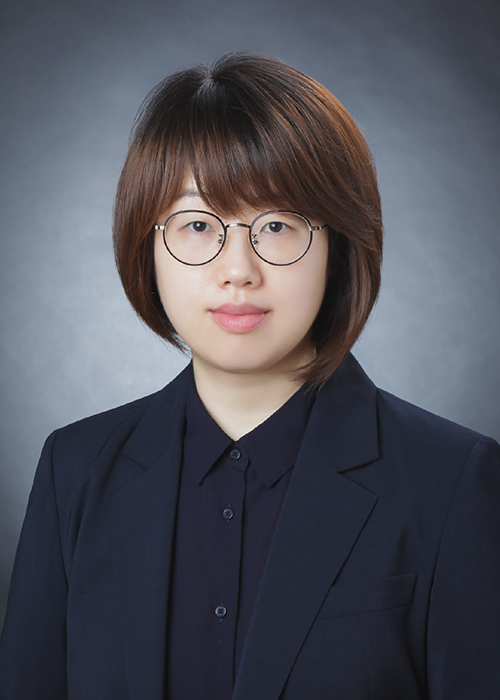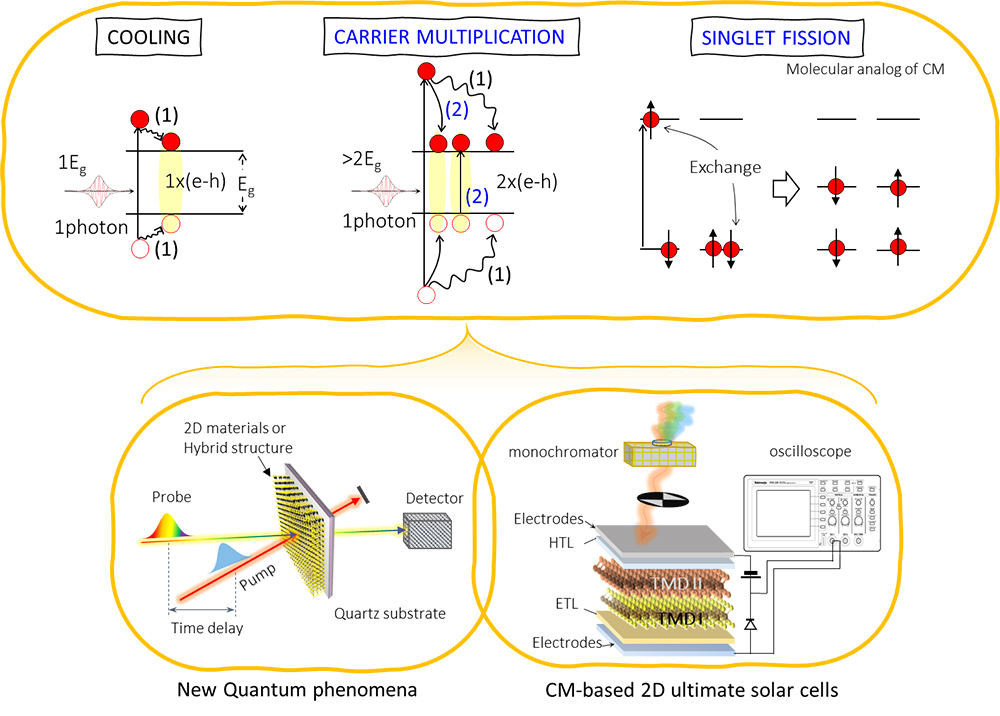mainmenu
To explore new physics phenomena of low dimensional materials
with a special emphasis on two-dimensional layered structures

Prof. Ji-Hee Kim
Team Leader
Carrier multiplication for solar power conversion breakthrough and hot carrier dynamics in 2D materials
The efficient conversion of photon energy into electrical charges has been a central goal of many research fields. Usually, the absorption of a single photon by a semiconductor produces a single electron-hole pair while the photon energy in excess of the energy gap is dissipated as heat by phonon emission. This results in a maximum power conversion efficiency of a single junction solar cell of ~33%, known as Shockley-Queisser limit. To break this limit and boost the efficiency of solar cells, carrier multiplication (CM) has been suggested as a potential approach but yet to be proven relevant to practical devices. CM is a process in which more than one electron-hole pair is generated by the absorption of a high energy photon, usually higher than two times the band gap in semiconductors. This effect has received considerable interest because it has the potential to enhance the performance of solar cells, high speed electronic devices and etc.
During 2019, we have investigated how to determine the CM efficiency in device-grade films of 2D materials via photocurrent measurements, which is a direct evidence to evaluate CM process. The new observations by the electrical approach are in close agreements with the results confirmed by optical approach we have performed over the previous years. We have also probed a way to further enhance the CM efficiency by combining 2D materials with molecular systems capable of singlet exciton fission. This is not only an important achievement of proving the validity of such approaches we suggest, but also a meaningful results in terms of which the CM phenomenon was confidently observed in 2D vdW layered materials. To realize a CM-based solar cell, which is one of our final goals of this project in 2020, based on the novel physical phenomena for efficient light harvesting, we shape the plan and in the following section, we describe our achievements during 2019.

▲ Figure. Plan and goal of the core project III (Carrier multiplication team)









